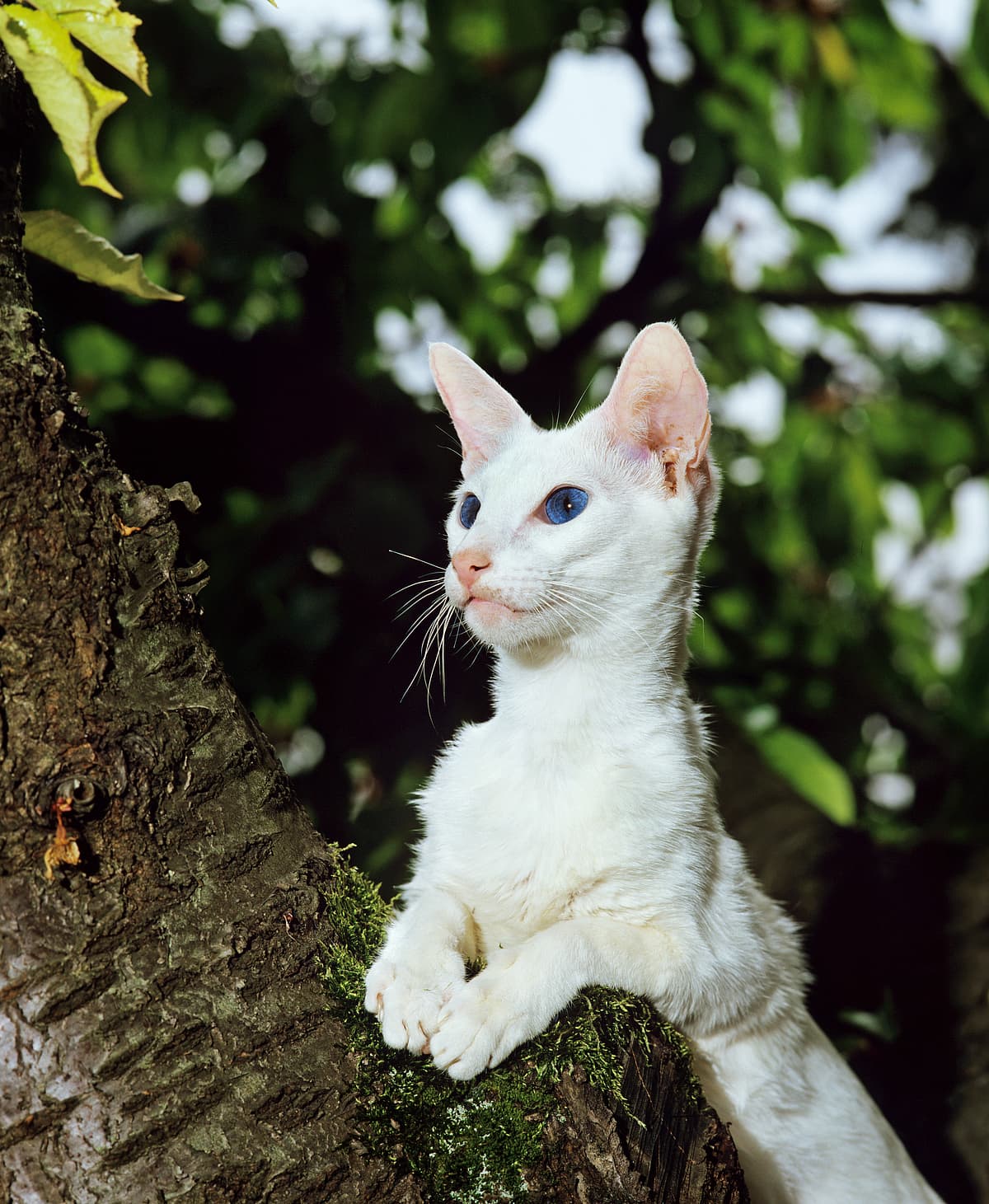Foreign White vs Norwegian Forest Cat
Discover the differences between Foreign White and Norwegian Forest Cat to make the best choice for your situation.
Try different breeds

Foreign White
Elegant, affectionate, and sociable, the Foreign White thrives as a loyal companion and adores interactive play. Bright blue eyes and a pristine white coat set this breed apart.

Norwegian Forest Cat
Majestic and affectionate, this sturdy cat charms with a thick, water-resistant coat and a gentle, playful spirit. Adaptable and loyal, it thrives in active households and quiet homes alike.
Quick comparison
Medium
4–6 kg
Shorthaired, fine-textured
12–15 years
3–5 kg
High energy
Large
5–9 kg
Longhaired, water-repellent
12–16 years
3.5–7 kg
Moderately active
Personality & behavior
Compare the personality traits and behavioral characteristics of both breeds.
Foreign White
Enjoys human company, affectionate with families
Learns quickly, responsive to training
Active and alert throughout the day
Engages in interactive games and toys
Adjusts to new environments fairly well
Norwegian Forest Cat
Enjoys human company, gentle with children
Learns routines and new environments quickly
Moderate activity, enjoys climbing and exploring
Likes interactive games and toys
Adjusts well to home changes and new people
Care needs
Exercise, grooming, and daily care requirements
Foreign White
Deafness, progressive retinal atrophy
Norwegian Forest Cat
Glycogen storage disease IV, hypertrophic cardiomyopathy
Suitability
How well each breed fits different living situations and families
Foreign White
Good option
Their friendly, adaptable nature suits novice owners willing to provide attention and enrichment.
Excellent fit
Quiet, playful temperament and moderate activity level are well-suited to apartment environments.
Very suitable
They enjoy interactive play and thrive in energetic homes with plenty of stimulation.
Suitable with supervision
Social and gentle, but may need monitoring around very small children due to sensitivity.
Works with care
Generally gets along with other pets if socialized early to avoid territorial behavior.
Not ideal
Dislike being alone and may develop anxiety if left for long periods.
Norwegian Forest Cat
Good option
Gentle and adaptable, but benefits from owners willing to learn grooming needs
Works with effort
Can adapt to apartments if provided climbing spaces and stimulation
Highly suitable
Enjoys play and activity, fitting well in energetic homes
Very friendly
Patient and gentle, generally tolerant of respectful children
Good companion
Gets along with other pets if introduced properly and given space
Not ideal
Dislikes long periods alone and may develop stress or boredom
Breed strengths
What each breed excels at and their best qualities
Foreign White
- Affectionate with family members
- Highly intelligent and curious
- Distinctive pure white coat
- Social and enjoys company
- Playful and active nature
Norwegian Forest Cat
- Adaptable to various living environments
- Affectionate without being overly demanding
- Strong climbers with agile movement
- Thick double coat protects in cold climates
- Generally healthy with few genetic issues
Challenges & considerations
Potential challenges and considerations for each breed
Foreign White
- Prone to separation anxiety if left alone
- Needs frequent mental stimulation
- Sensitive to loud noises and chaos
- May develop dental health issues
- Requires regular grooming to prevent matting
Norwegian Forest Cat
- Requires regular grooming to prevent mats
- Prone to obesity if under-exercised
- Can be shy with strangers initially
- High prey drive may affect small pets
- Needs mental stimulation to prevent boredom
Ready to choose your perfect breed?
Learn more about each breed or compare other breeds to find the perfect match for your lifestyle.
Discover more helpful tools
Make use of our other free tools to get the most out of your pet experience
